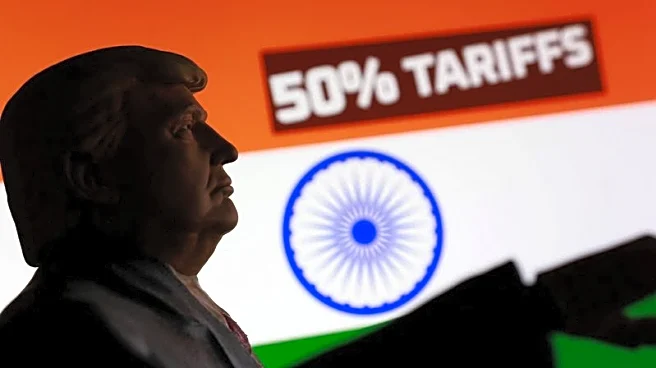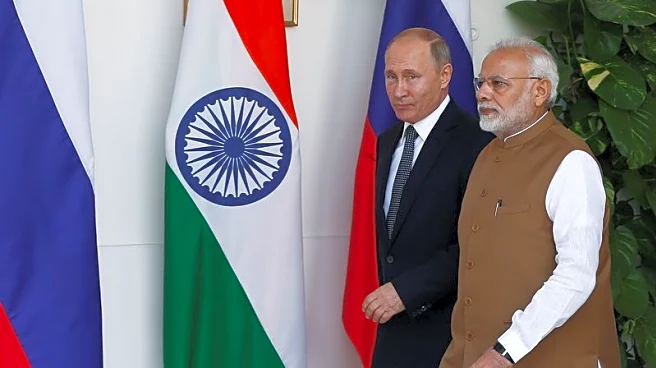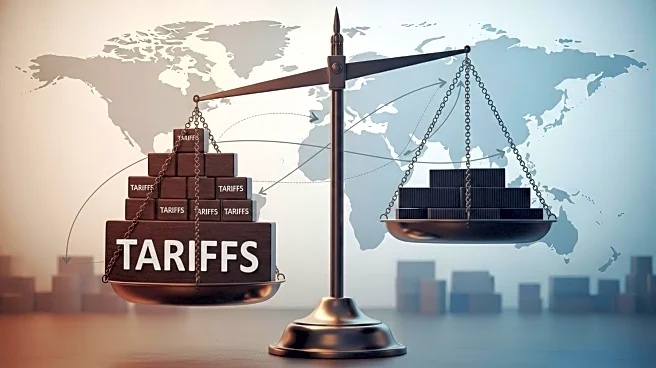What is the story about?
What's Happening?
President Trump has implemented a 50% tariff on imports from India, following through on a previous threat. This decision is aimed at penalizing India for importing Russian oil, which is perceived as supporting Moscow's war efforts in Ukraine. The tariffs could strain relations with India, a key trading partner, and potentially lead to increased consumer prices in the U.S. The move has prompted India to consider retaliatory tariffs on American goods, which could impact industries such as chemicals, oils, gases, and aerospace products.
Why It's Important?
The imposition of tariffs on Indian imports by President Trump marks a significant escalation in global trade tensions, with potential repercussions for both economies. For the U.S., this could lead to higher consumer prices and disruptions in industries reliant on Indian imports. For India, retaliatory measures could affect its trade balance and economic growth. The decision underscores the complexities of international trade policies and their impact on diplomatic relations, economic stability, and global supply chains.
What's Next?
India is expected to respond to the tariffs with its own set of retaliatory measures, which could further escalate trade tensions between the two nations. Businesses and industries affected by these tariffs may seek alternative markets or adjust their supply chains to mitigate the impact. Additionally, diplomatic efforts may be initiated to resolve the trade dispute and restore economic relations between the U.S. and India.
Beyond the Headlines
The tariff decision reflects broader geopolitical dynamics, including the U.S.'s stance on Russia's actions in Ukraine and its influence on global trade policies. It also highlights the interconnectedness of international economies and the potential for trade policies to affect global political alliances and economic strategies.
AI Generated Content
Do you find this article useful?













